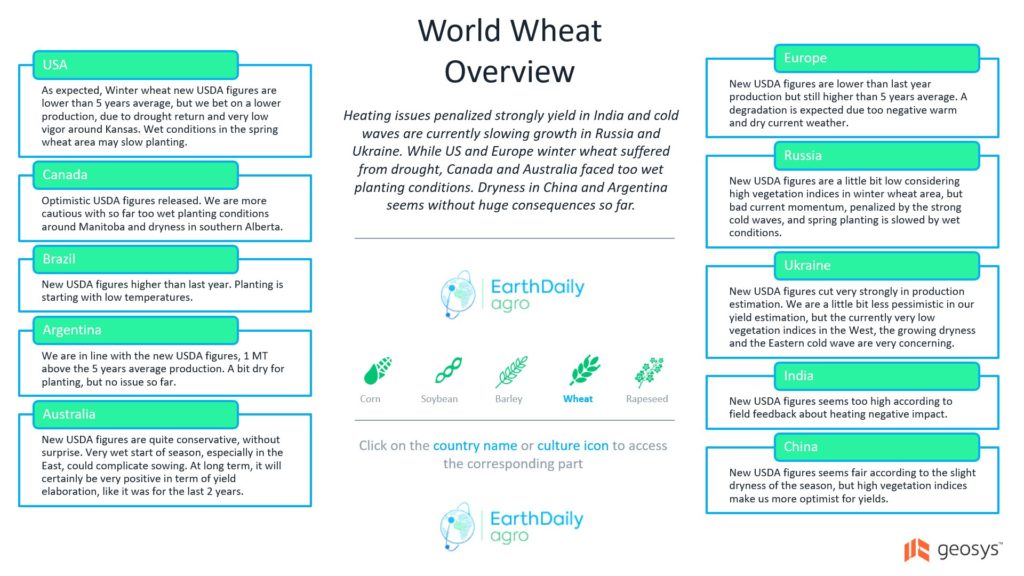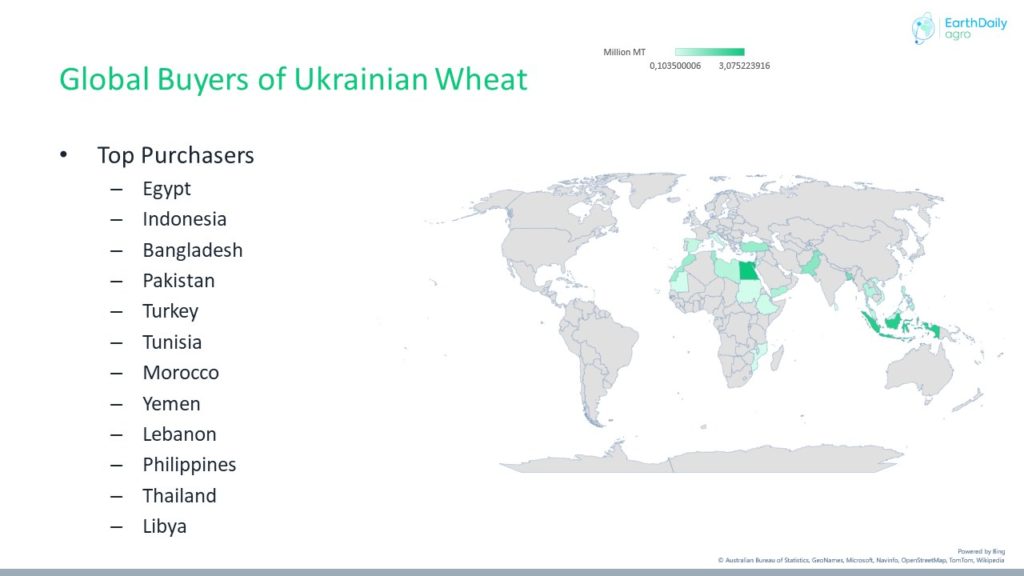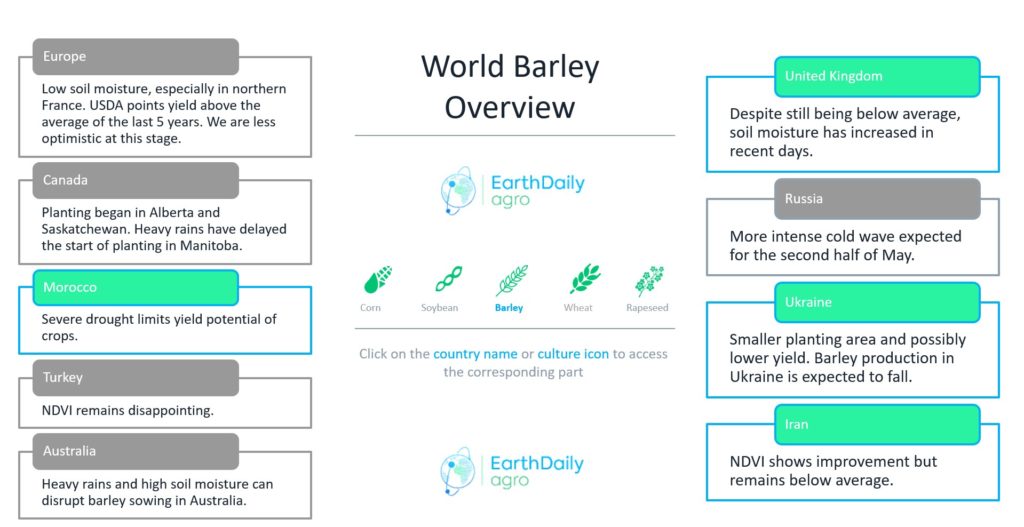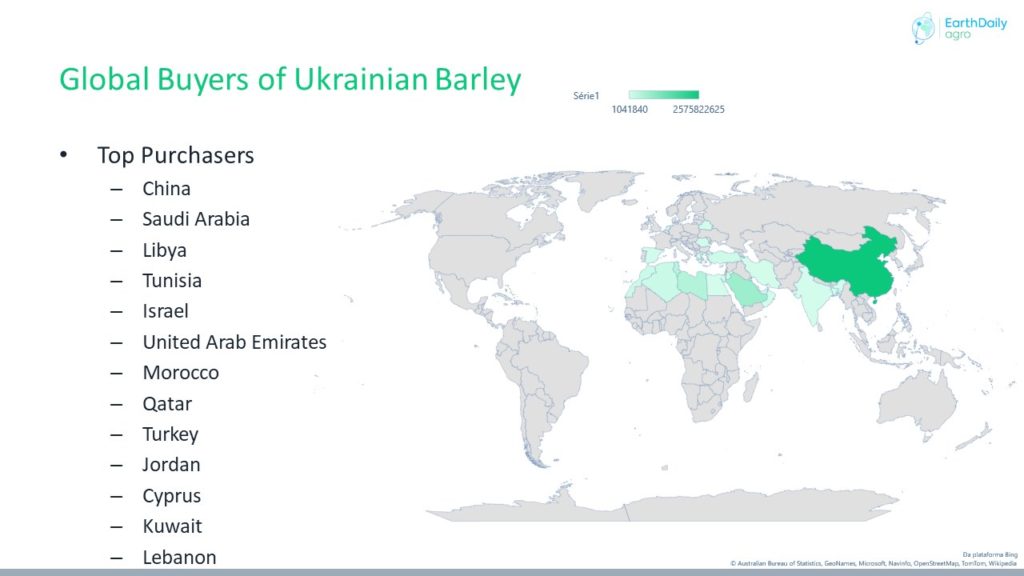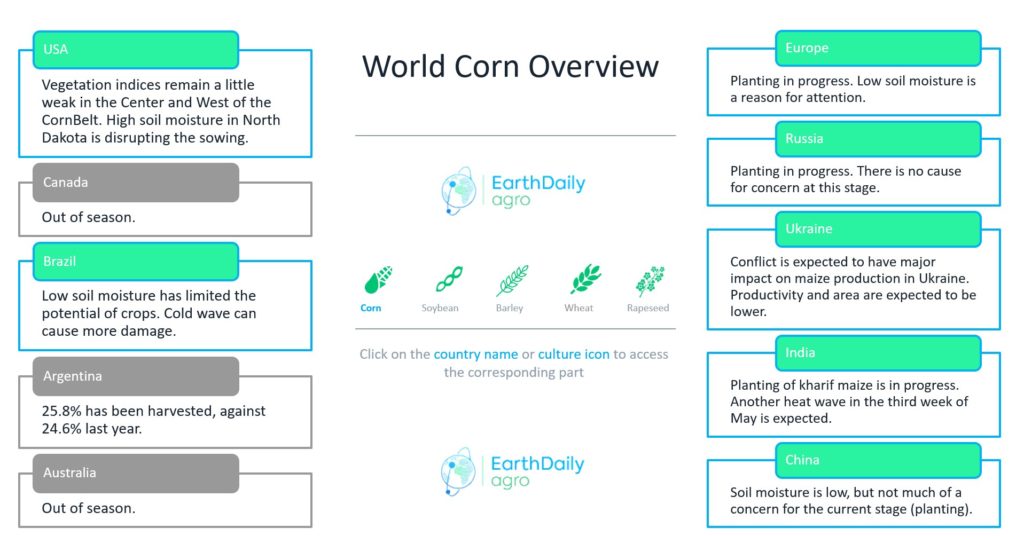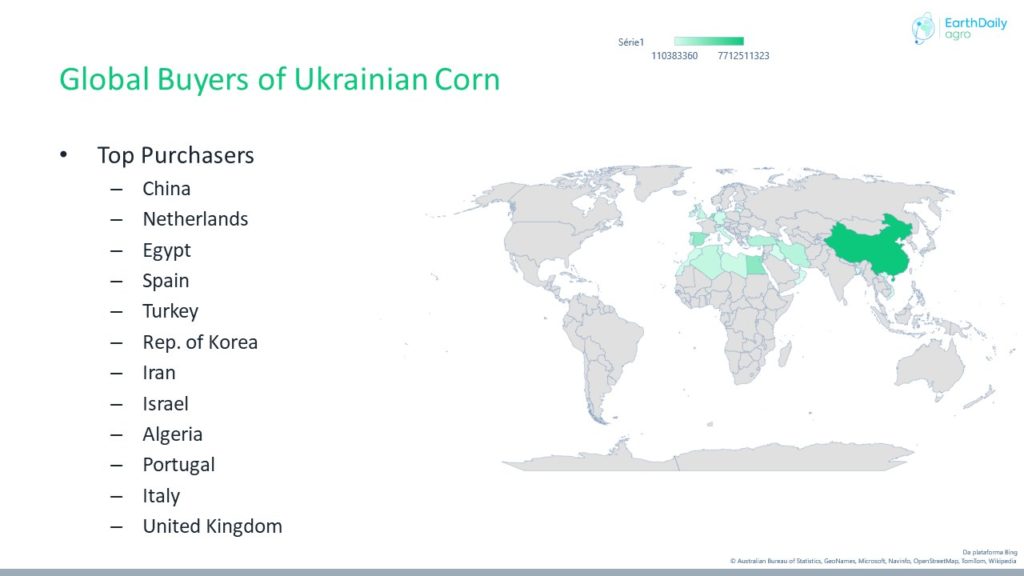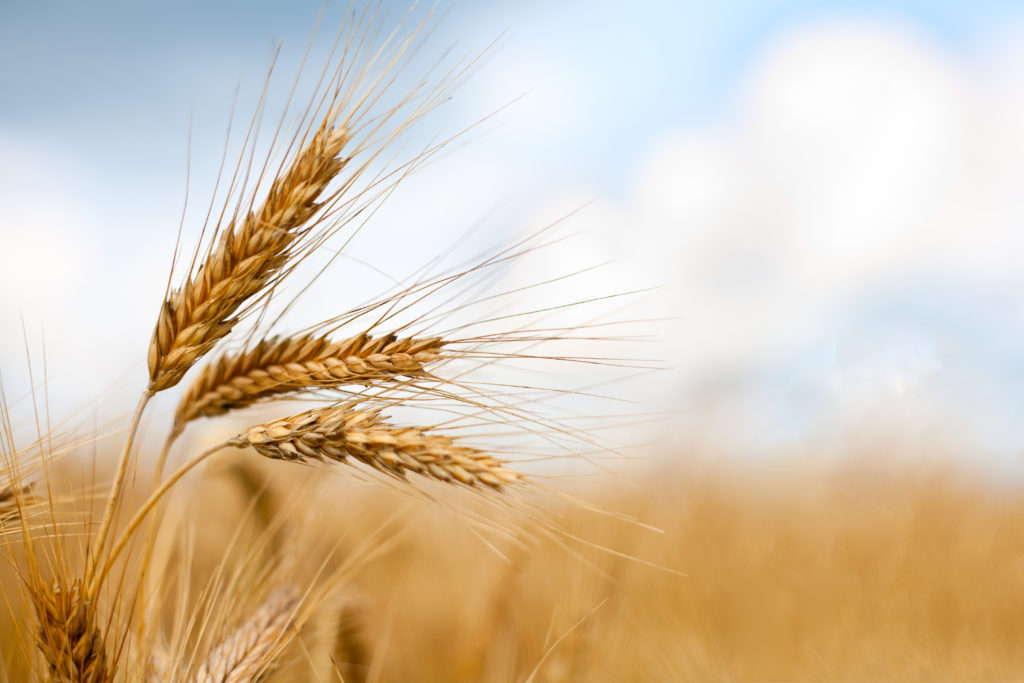
An Update on Global Wheat, Barley and Corn Supply Disruption Amid the Russia-Ukraine War
Today’s global food supply chain is highly connected, and the current war in Ukraine has created a tangible disruption in worldwide food security — specifically when it comes to wheat, corn, barley, sunflower, rapeseed and fertilizer. In response, EarthDaily Analytics and its EarthDaily Agro agriculture division are harnessing the power of Earth Observation technology to actively monitor crop health around the world. Through this monitoring, EarthDaily is able to detect early warning signs of production distress, equipping food security organizations to take proactive action.
Under this initiative, EarthDaily is creating a series of crop monitoring reports. Each report focuses on a different crop and its health across major producing countries as well as potential impacts to dependent importing countries. Previous reports focused on wheat, barley and corn. Today, EarthDaily has released the fourth report in the series to provide the latest production updates for each of these crops.
New data on global wheat supply and demand
A mainstay crop worldwide, wheat has been a core focus of EarthDaily Agro’s current crop monitoring efforts, with an initial report released Thursday, March 31, and a follow-up alert released Wednesday, May 11. Now, EarthDaily’s most current data has revealed the refreshed insights below.
- Production: Across North America, ongoing drought conditions have stymied projected crop yields, and more recently, overly wet conditions have hindered planting progress. Meanwhile in South America, conditions appear to be more favorable for the region’s wheat production. Other regions of interest include Russia and Ukraine, which are both experiencing delays in wheat growing due to below-average temperatures.
- Trade: Due to dependence on imports, the countries whose wheat supplies appear to be currently most at risk include Egypt, Bangladesh, Turkey, Tunisia, Yemen and the Philippines. In particular, these countries rely heavily on Ukrainian wheat, and with below-average production anticipated in Ukraine, supply shortfalls will likely result unless production deficits can be filled by other countries, which does not appear likely at this time.
Access the updated wheat reports now
New data on global barley supply and demand
Like wheat, barley is a staple crop around the globe. EarthDaily Agro released its first barley report Thursday, May 5. Following this initial report, EarthDaily has continued to conduct ongoing monitoring, which has revealed the additional insights below.
- Production: Globally, current conditions across the world’s major barley-producing regions represent a cause for attention. From low soil moisture in Europe to rain-related planting delays in parts of Canada to severe drought in countries like Morocco, environmental conditions have inhibited healthy barley output.
- Trade: Due to dependence on imports, the countries whose barley supplies appear to be currently most at risk include China, Saudi Arabia, Libya, Morocco, Turkey, Jordan, Cyprus, Kuwait and Lebanon. Much as in the case with wheat, countries whose barley supplies are at risk are largely the same countries that rely on Ukrainian crop production.
Access the updated barley reports now
New data on corn supply and demand
The third global crop that EarthDaily Agro has monitored to date under its current initiative is corn. Initial findings were released as part of EarthDaily’s initial corn report on Friday, April 15, and since then, the following insights have also been uncovered.
- Production: Currently, the outlook on global corn production is mixed. While U.S. planting is pacing slower than average, there is no cause for alarm at this time. Meanwhile in South America, low moisture and below-average temperatures may impede crop health. Additionally, regions including China, Russia and a variety of European countries are also experiencing low-moisture conditions, but not to the extent to cause serious concern at this point.
- Trade: Due to dependence on imports, the countries whose corn supplies appear to be currently most at risk include the Netherlands, Spain, Turkey and an array of North African countries. Following similar themes as wheat and barley, global corn supply risks stem largely from a combination of low soil moisture and dependance on Ukrainian exports.
Access the updated corn reports now
About the initiative
EarthDaily Analytics and its EarthDaily Agro agriculture division are harnessing the power of Earth Observation technology to actively monitor crop health around the world. Through this monitoring, EarthDaily is able to detect early warning signs of production distress, equipping food security organizations to take proactive action.
Learn more about the initiative at www.earthdailyagro.com/ukraine. For more information, contact our analysts, who can provide daily crop monitoring, weather forecasting and production estimation of crop-producing regions worldwide.

